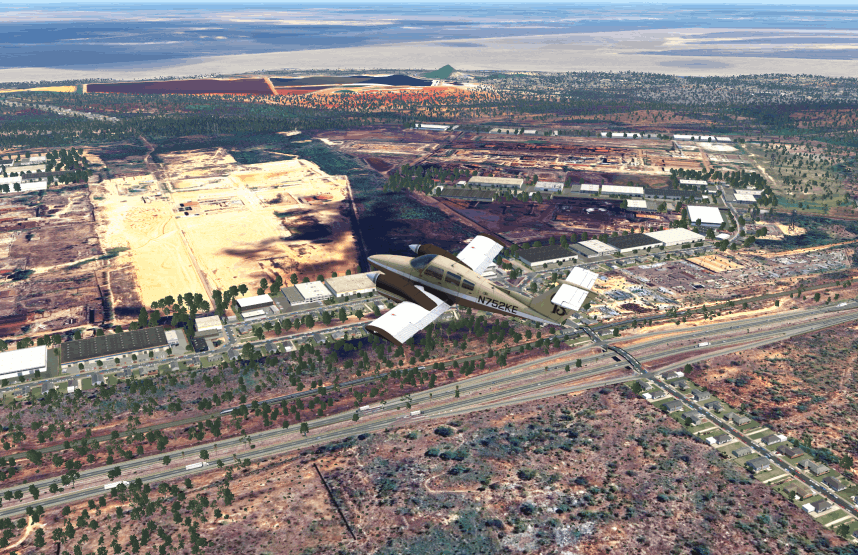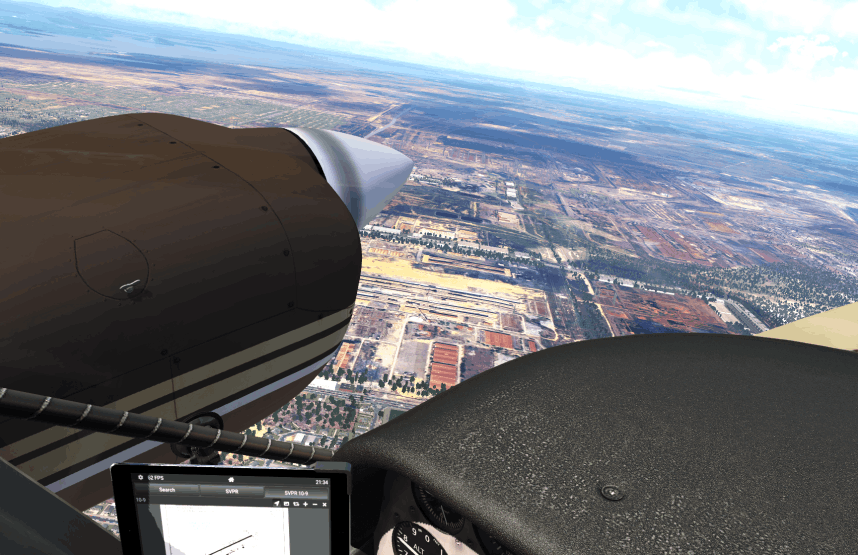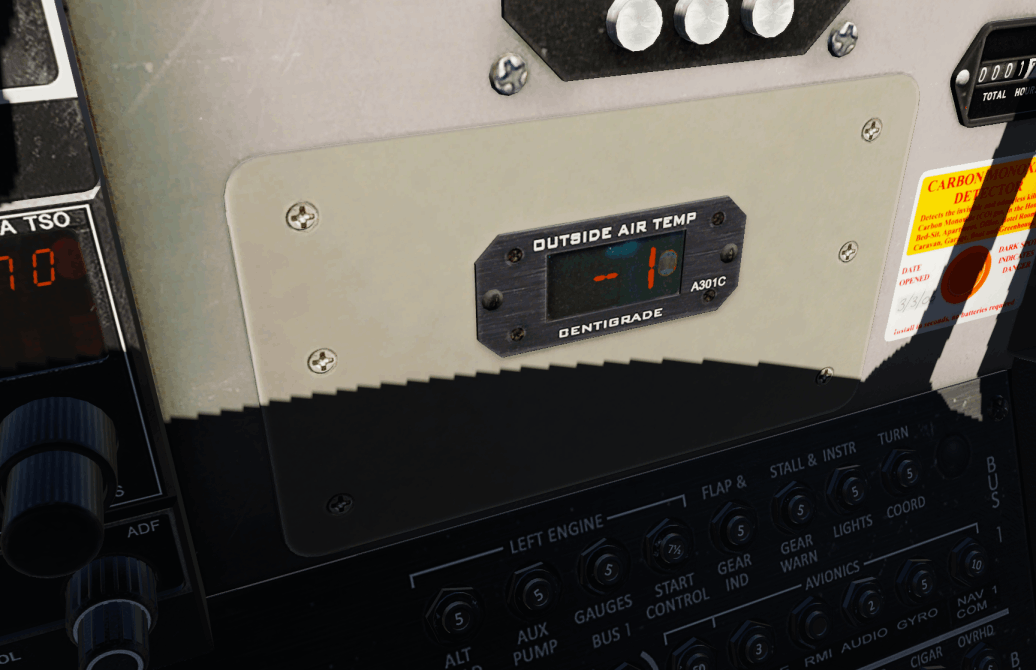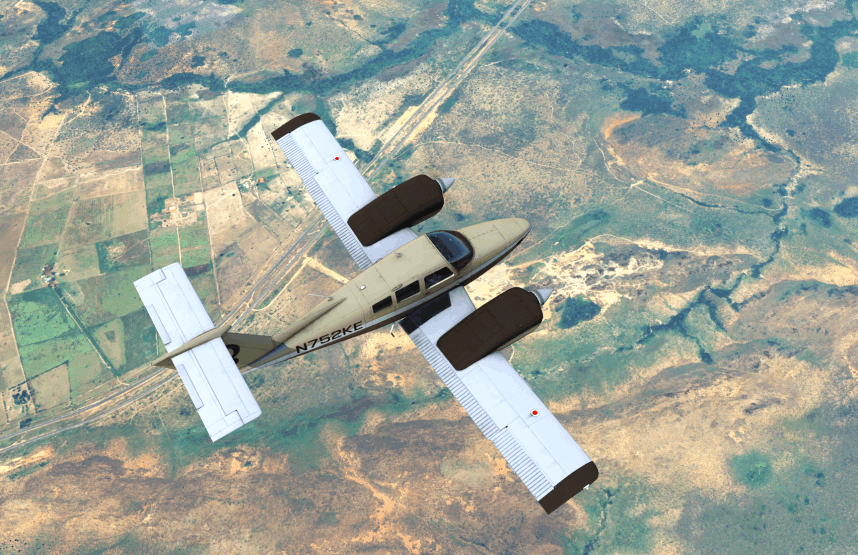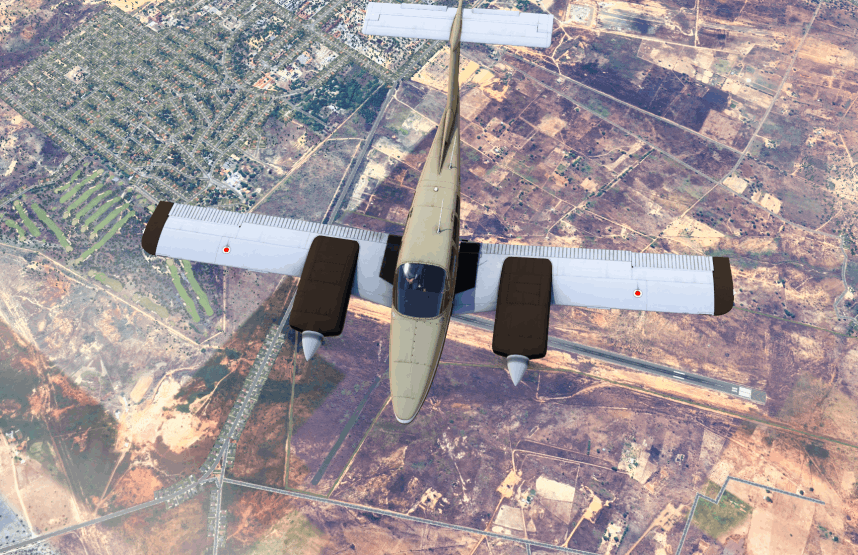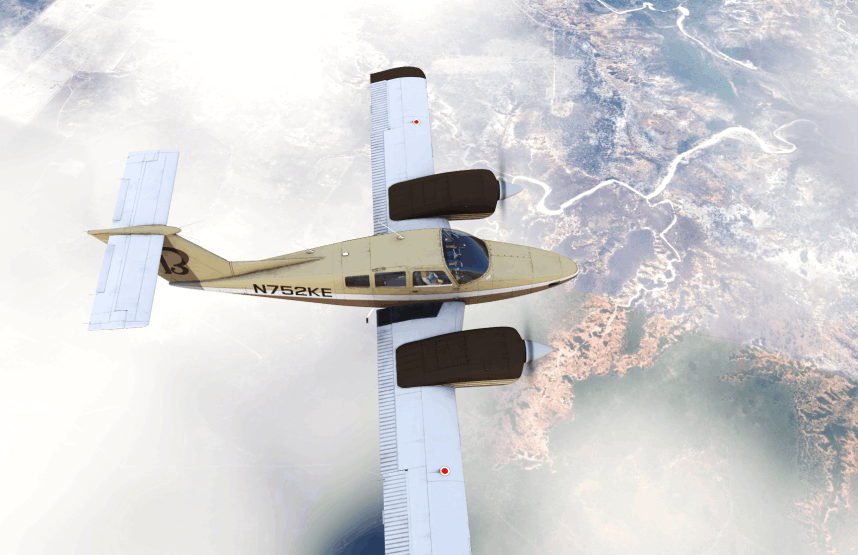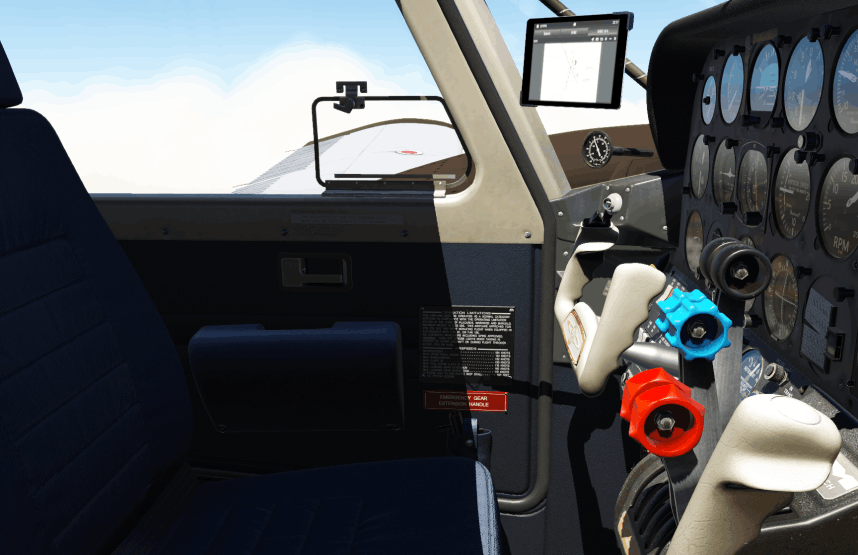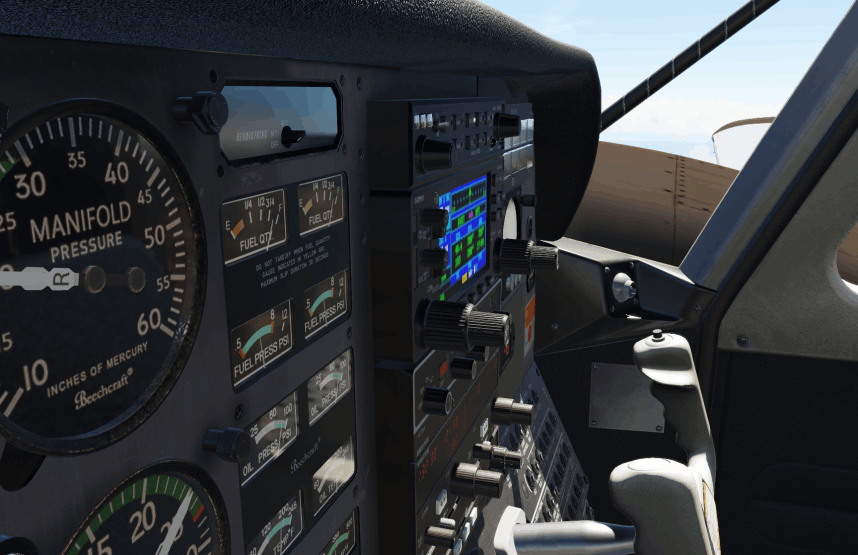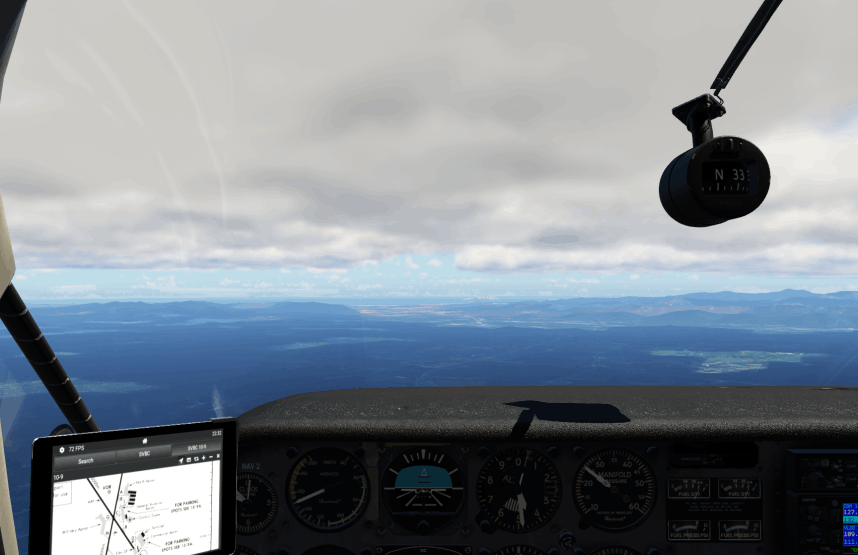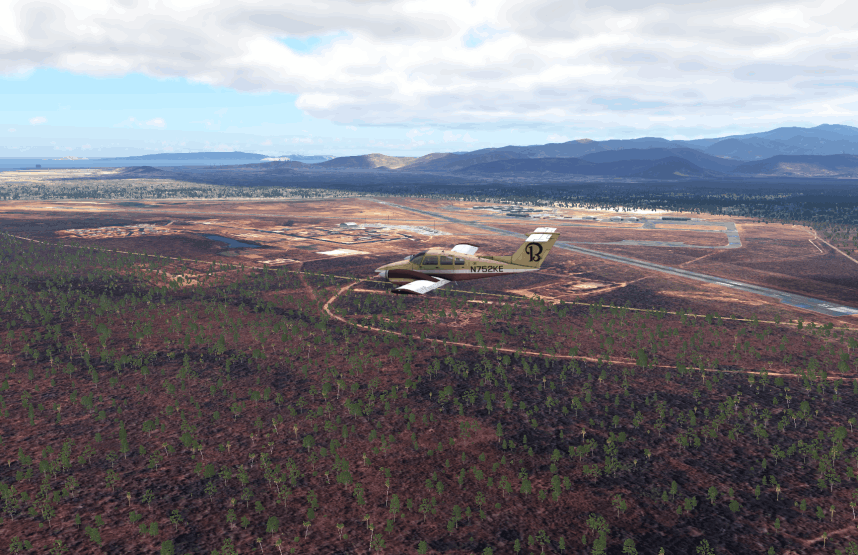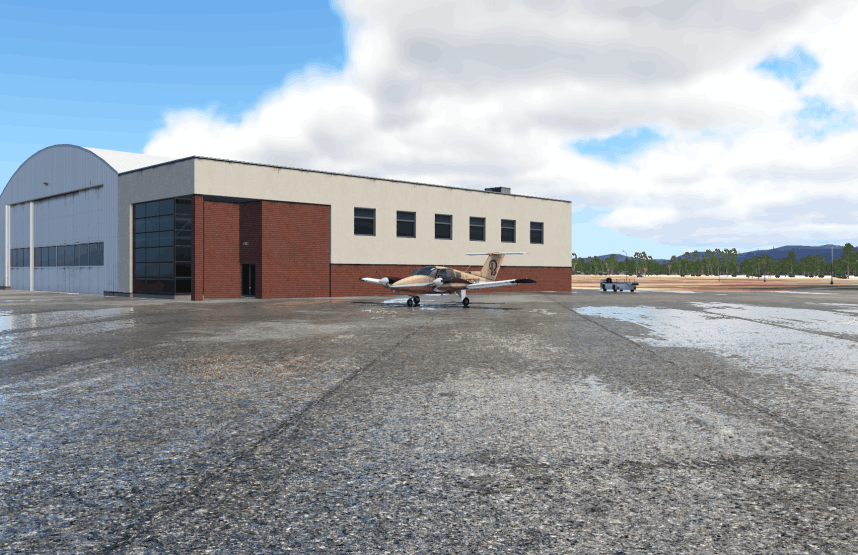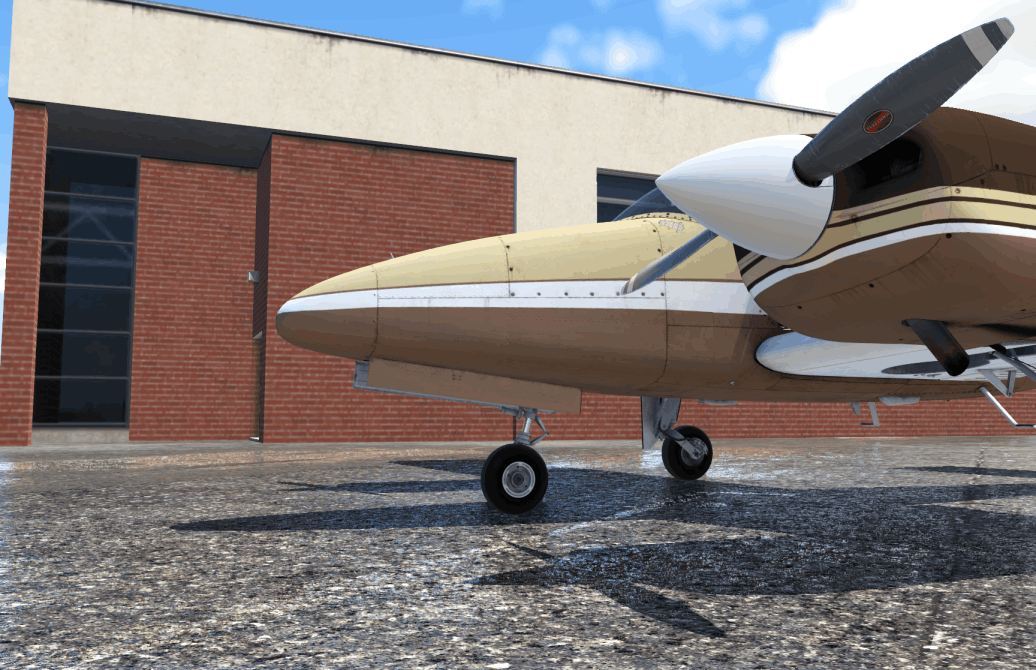
Wanda is carrying 3 FSEconomy passengers, me and a full load of fuel with plenty of room to spare. What an animal!
It feels good to accomplish real work. The big crate is unloaded, the fuel tanks are topped, there is coffee in my hand and the three passengers are ready to continue to their destination on the Venezuelan coast.
I'm sitting in the cockpit, preparing for the leg ahead while the passengers take their last moments to stretch their legs. Today's second flight will be a 75-minute, 180 mile trek to Barcelona. Looking at the weight and balance worksheet, it seems the best plan will be to climb all the way up to 10,500 feet for best fuel efficiency and smooth air. The forecast tells me that I might find a freezing level somewhere above 6,000 feet, so it will be good for Wanda's engines also. If she flies according to the book, we should be at our cruise altitude in exactly 7 minutes. Let's see what happens.
I give a respectful whistle to the passengers as the signal to climb aboard one more time. As they get comfortable, I run my workflow with industrial efficiency. Let's get back to work, Wanda.





